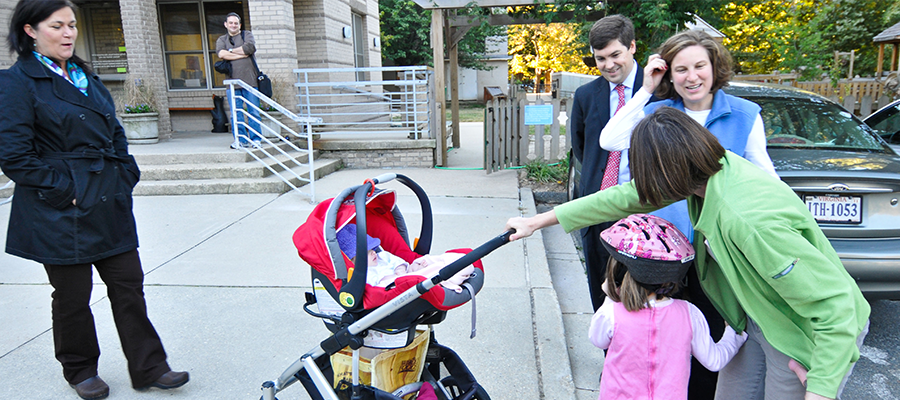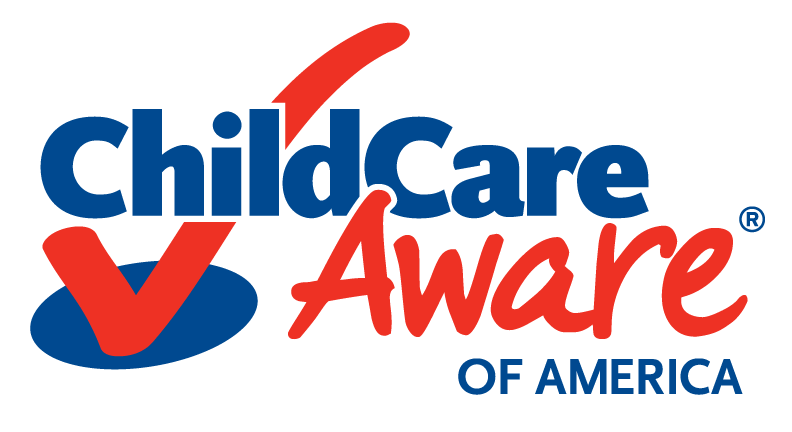

Families put a lot of trust in child care providers every day. Part of that trust is knowing that children will be safe and cared for in any situation, including during and after an emergency. Child care providers who plan ahead are better-prepared and will know what to do to respond to an emergency and keep the children in their care safe. By planning and preparing in advance, they are also able to recover faster after an emergency.
Why should I include families in child care emergency preparedness planning?
To help create strong relationships with families, it is important for programs to engage families in many aspects of child care,including emergency preparedness, response and recovery. Partnering with families strengthens family-child relationships, and allows the family to be a key support to their child and the child care program, before and after an emergency.
When families are part of the emergency preparedness process, they understand it better and can be confident that their children are safe in child care. They are also more likely to be supportive of practice drills and other required preparedness tasks. If families are familiar with your written child care emergency plan, they can also discuss it with their children, so they are more comfortable as well. Families can also supply providers with valuable information about their child that can be useful when preparing for and responding to emergencies.
How can I involve families in child care emergency preparedness planning?

There are many ways to involve families in emergency preparedness planning at your child care program. Some ideas include:
Communication:
- Share information with families about why emergency preparedness is important for child care programs.
- Make sure all families have a copy of the written emergency plan.
-
- Include this information in your Family Handbook, along with your expectations about their involvement. Revisit the emergency plan with families throughout the year.
- Familiarize families with the protocol for communication during and after an emergency.
-
Provide emergency plan wallet cards with your off-site evacuation location and emergency contact numbers. Ensure parents know the plan for reunification.
-
Let families know when practice drills are scheduled. Share information with them afterward to let them know how the drill went.
- Ask families to make sure their emergency contact information is up-to-date. Offer regular opportunities for them to review and update the information. Make sure you have more than one way to contact families.
-
- During practice drills, randomly choose some of the emergency contacts to call to spot-check for responses and accurate information.
-
- Encourage families to sign up for emergency alerts so they’re aware of emergencies as well.
Engagement:
- Work with families to identify any unique needs their child or family have that would need to be accommodated in emergency planning.
-
- Incorporate preparedness into transitions for children. Talk to families about what the child’s new classroom will do differently (if in center-based child care).
- Incorporate preparedness into transitions for children. Talk to families about what the child’s new classroom will do differently (if in center-based child care).
-
- Allow families to observe, or even take part in, a practice drill so they fully understand the process.
- Ask each family to supply any items their child might need in an emergency (extra clothes, medication, comfort items, etc.).
-
- Use the changing seasons to remind families to update their child’s clothing, including what they provide for emergency use, to make sure it’s appropriate for the weather.
-
- Encourage families to create their own emergency plan. You can support their planning by hosting preparedness events and sending home preparedness resources. (Ready.gov and the Centers for Disease Control and Prevention (CDC) both offer helpful resources for families.)
Collaboration:
- Ask families for their input as you develop your emergency plans and decision-making related to emergency preparedness.
- Discuss each family’s role in the emergency plan and procedures. For example, if they have a long commute and may not be able to pick up their child quickly in the event of an emergency, what is their plan?
- Give families age-appropriate information about emergency preparedness and practice drills and ask them to reinforce it at home.
- Create a list of items needed to maintain an up-to-date emergency supply kit for your child care program and ask families to donate if they can. Consider asking for items for comfort kits as well.
How do I partner with families during the COVID-19 pandemic?
Partnering with families during the COVID-19 pandemic requires creativity. Think about the ways you are currently engaging families while meeting safety protocols and decide how you can add emergency preparedness, response and recovery.
Consider these ideas to get you started:
- Use Family Engagement Software to communicate and share emergency preparedness content with families.
- Embed emergency preparedness content on your child care program’s website.
- Add emergency preparedness content to e-newsletters for families.
- Record a short video that walks through your written emergency plan and share it with families.
- Hold a “live” family engagement event/meeting around emergency preparedness (Facebook Live, Google Meet, Zoom, etc.).
- Set up a contest/challenge/activity to share with families to practice emergency preparedness plans or create emergency preparedness plans for their family (scavenger hunt, bingo, checklist, etc.). These can be done as virtual events as well.
- Have families post pictures of emergency plans on social media or family engagement software platforms.
- Offer a “live” family story time and read a book around a theme of emergency preparedness. Share an activity that goes along with the book.
- Demonstrate a tip or activity “live” as a family engagement activity (i.e., Vroom Tip – Calm Down Kit).
-
- Help families understand the connection between the Calm Down Kit tools and how they can help a child be better able to handle disruption to their routine, such as in a disaster.
-
- Pose a question on a social media platform or family engagement software platform for families to respond to (e.g., What are some things that you plan to do to plan for tornado season?).
Next Steps
Remember that partnering with families is not a one-time event. Including families in emergency preparedness for your child care program should be an ongoing process. Think about which activities you can implement to strengthen your child care emergency preparedness and involve families in the process. Can you incorporate any strategies into your preexisting family engagement work?
One strategy is to start small by sharing information with families on why emergency preparedness is important for your child care program and build from there. Consider identifying families who might have knowledge to contribute to the planning process but invite all families to take part. Be sure that all possible needs are represented by families during planning. Identify families that have children with diverse needs, such as non-mobile infants; two-year-olds; pre-kindergarten age children; children with disabilities; and children who attend early, late or part-time.
Contact your local Child Care and Referral agency (CCR&R) for additional support in engaging families in your emergency preparedness planning.
Resources
- Parents: Is Your Child Care Program Prepared for an Emergency Event? (CCAoA)
- Child Care Emergency Preparedness (CCAoA)
- Child Care Written Emergency Plan Video Series (CCAoA)
- Preparing for Emergencies: Tips for Families with Young Children (CCAoA and Vroom)
- Emergency Information Parent Letter (with Wallet Card) (Iowa CCR&R)
- Family Readiness Kit (American Academy of Pediatrics)
- Make A Plan (Ready.gov)
- Emergency Preparation (Sesame Street)
Blog Contributors:
- Kandi Novak: Technical Assistance Specialist, Child Care Aware of America
- Carol Ayres: Early Care and Education Specialist, The Family Conservancy


